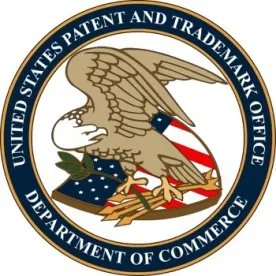The Patent Trial and Appeal Board (PTAB) issued an August 2018 update to the American Invents Act Trial Practice Guide (the “Updated TPG”). The Updated TPG incorporates the PTAB’s current practices and provides further explanation of certain aspects of the PTAB’s standard practices to the public. Most significantly, the Updated TPG abolishes “observation” practice and replaces it with sur-reply brief practice.
The sections of the Updated TPG include:
Expert Testimony (Section I.G)
This section summarizes the PTAB’s current practices regarding the appropriate form and use of expert testimony and how the qualifications of an expert are to be assessed. Notably, “[e]xpert testimony may be submitted with the petition, preliminary response, and at other appropriate stages in a proceeding as ordered or allowed by the panel overseeing the trial” and is “presented in the form of an affidavit or declaration.” Updated TPG, at 2-3. Moreover, “[e]xpert testimony may have many uses … it may be used to [i] explain the relevant technology[,] … [ii] establish the level of skill in the art and describe the person of ordinary skill in the art[,]” and [iii] “establish the scope and content of the prior art for determining obviousness and anticipation.” Updated TPG, at 3-4.
Word Count and Page Limits (Section II.A.3)
The word count and page limits of the original Trial Practice Guide still apply. In addition, a sur-reply, if authorized, is subject to the same word count or page limit as the reply, unless the PTAB authorizes otherwise. The Updated TPG also provides the following practical guidance regarding compliance with the word count limits: (i) using claim charts to include concise arguments; (ii) relying on a word count supplied by a word processing program; and (iii) cautioning against abusing the word count limit by various techniques such as using excessive words in images, using excessive acronyms or abbreviations for word phrases, or deleting spaces between words. Updated TPG, at 7.
Considerations in Instituting a Review (Section II.D.2)
The Updated TPG discusses the application of 35 U.S.C. §§ 314(a) and 325(d) under General Plastics and Becton Dickinson, respectively, and other similar PTAB decisions when deciding to institute a trial. Specifically, the Updated TPG memorializes the non-exclusive factors set forth in General Plastics that the PTAB is to consider in exercising discretion on instituting inter partes review under § 314(a), especially as to “follow-on” petitions challenging the same patent previously challenged in a post-grant review proceeding. Updated TPG, at 9-11.
The Updated TPG also memorializes the non-exclusive factors set forth in Becton Dickinson that the PTAB is to consider when exercising discretion on instituting inter partes under § 325(d) in cases where the same or substantially the same prior art or arguments were previously presented to the USPTO. Updated TPG, at 11-12
Lastly, the Updated TPG, citing the SAS Institute Supreme Court decision, makes clear that once a trial is instituted, a petitioner is entitled to a Final Written Decision addressing all of the challenged claims. Updated TPG, at 8.
Reply to Patent Owner Response; Reply for a Motion to Amend; Sur-Replies (Section II.I)
First, the PTAB, post-SAS Institute, now permits the petitioner, in its reply brief, to address issues discussed in the institution decision. Additionally, and perhaps more importantly, the PTAB will now permit patent owners to file a sur-reply to respond to petitioner’s reply. Such sur-replies should only respond to arguments made in reply briefs, comment on reply declaration testimony, or point to cross-examination testimony. Updated TPG, at 14. Sur-replies may not be accompanied by new evidence other than deposition transcripts from the cross-examination of petitioner’s reply witness. Id. “This sur-reply practice essentially replaces the previous practice of filing observations on cross-examination testimony.” Id. This change in PTAB trial practice is significant because patent owners, instead of petitioners, now have the final word in the proceeding.
Challenging Admissibility; Motions to Exclude; Motions to Strike (Section II.K)
This section provides guidance for filing motions to exclude and motions to strike based on the PTAB’s current practice. In particular, a motion to exclude should only be filed to challenge the admissibility of evidence (e.g., relevance or hearsay)—arguments regarding weight should appear only in the merits documents. Updated TPG, at 16. Motions to strike should only be used if a party believes a brief filed by the opposing party raises new issues, is accompanied by belatedly presented evidence, or otherwise exceeds the proper scope of reply or sur-reply. Updated TPG, at 17.
Oral Hearing (Section II.M)
This section provides guidance on pre-hearing conferences. Prior to the pre-hearing conference, the parties should send the PTAB a joint request setting forth a set of limited issues for discussion. Updated TPG, at 19-20.
This section also provides guidance regarding several aspects of the hearing, including: the order of arguments, using special equipment and demonstrative exhibits, and presenting live testimony. Updated TPG, at 20-22.
Lastly, this section makes express that no new evidence may be presented at the oral argument. Updated TPG, at 23.
Appendix A (Sample Scheduling Order)
The Updated TPG also provides a sample Scheduling Order that now includes a provision for the patent owner to file a sur-reply (Due Date 3) and for the parties to request a pre-hearing conference (Due Date 6). Updated TPG, at 28.



 />i
/>i

